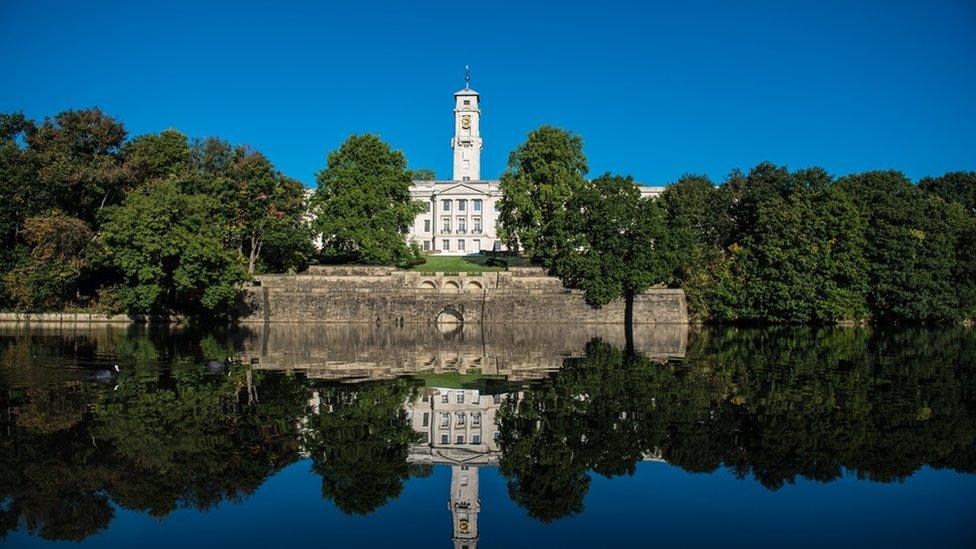Coronavirus: Extra restrictions imposed on Nottinghamshire
- Published
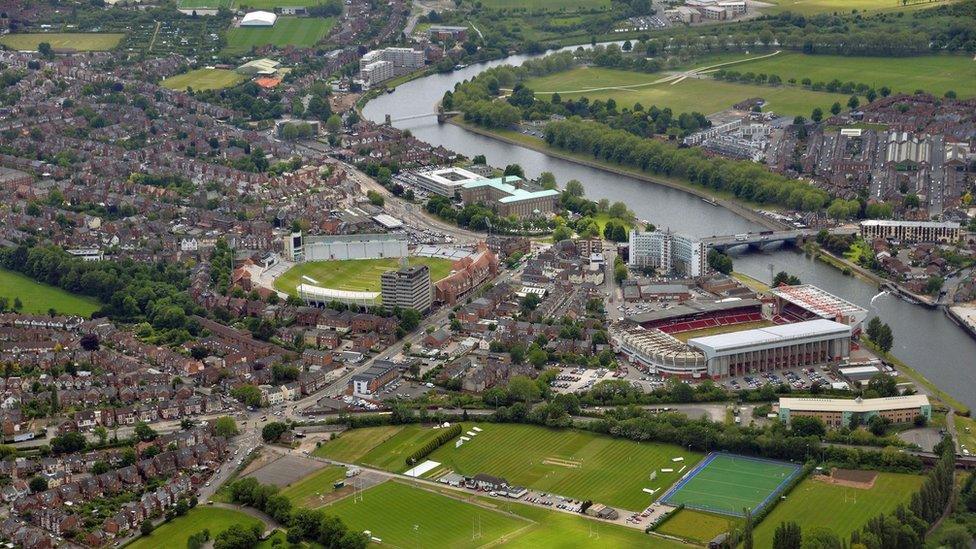
The city and its surrounding areas have experienced a surge in infection rates
Nottinghamshire households have been banned from mixing indoors as part of a new three-tier alert system.
It had been feared Nottingham's seven-day infection rate of 830 per 100,000 people - the highest in the country - would see it on the tightest rules.
But the city and county, despite varied infection rates, have been put on the mid-range tier two alert level.
City council leader David Mellen said he had been told tier three would be considered if rates kept on climbing.
Prime Minister Boris Johnson announced the new system and an outline of the restrictions they represent in Parliament.
The tier system is divided into "medium", "high" and "very high".
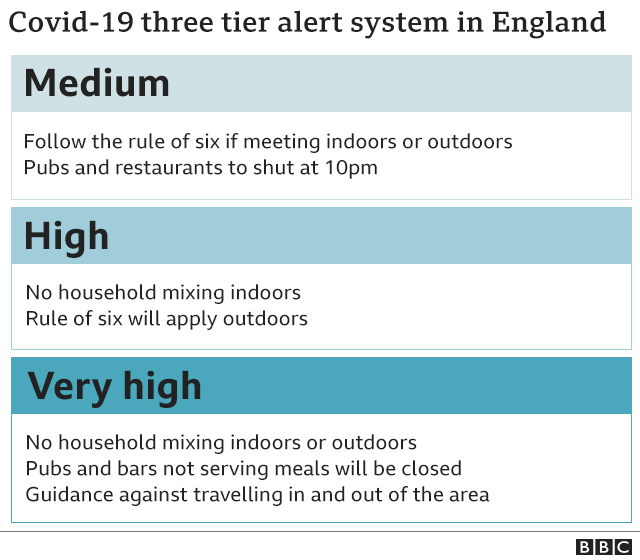
"High" alert means households will be banned from mixing indoors and the rule of six will apply outdoors.
While pubs and bars will still have to close at 22:00, they will not be forced to shut completely.
As well as Nottingham and Nottinghamshire, Glossopdale, a small area of High Peak in Derbyshire, has also been placed on "high" alert due to its infection rate.
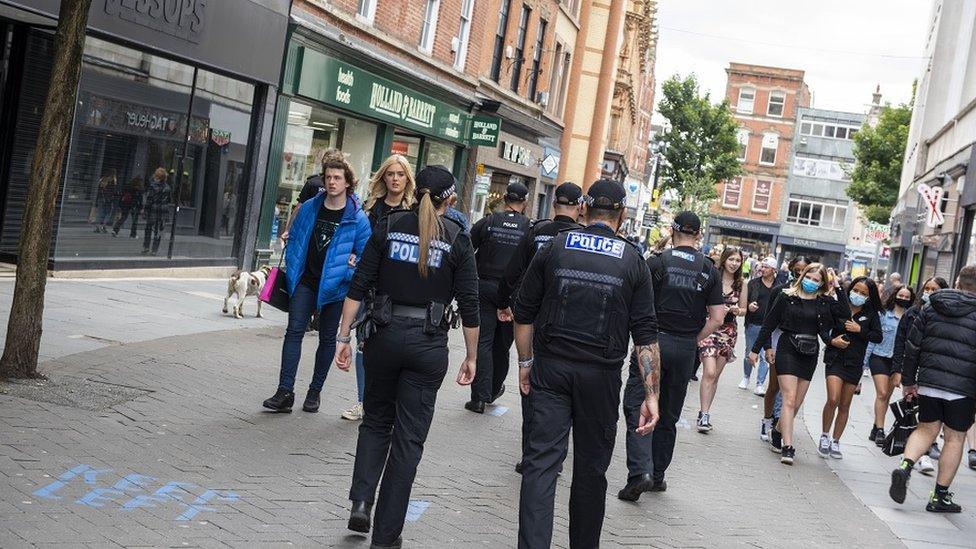
Nottingham's infection rate has almost doubled in a week
Mr Mellen said in the run up to the announcement, there was a "distinct possibility" the city would be put on the "very high" alert level.
"Our contact with civil servants has left us in no doubt tier three could be considered soon if things don't start to change in terms of the rate of increase," he said.
Mr Mellen also detailed the two reasons the city had not been put into the higher tier.
He said: "The first is that our hospitals aren't currently at that level. There is a great deal of preparation going on, but they're not full.
"The second is that the cases haven't spread in large numbers to the older population. Most of our cases are currently among younger people."
In a statement, the Department of Health and Social Care (DHSC) said the incidence rate was "only one of a set of considerations" and that decisions were made in consultation with local leaders and public health experts.
Nottingham Labour MPs Lilian Greenwood, Alex Norris and Nadia Whittome welcomed the introduction of tier two restrictions, but called for greater financial support.
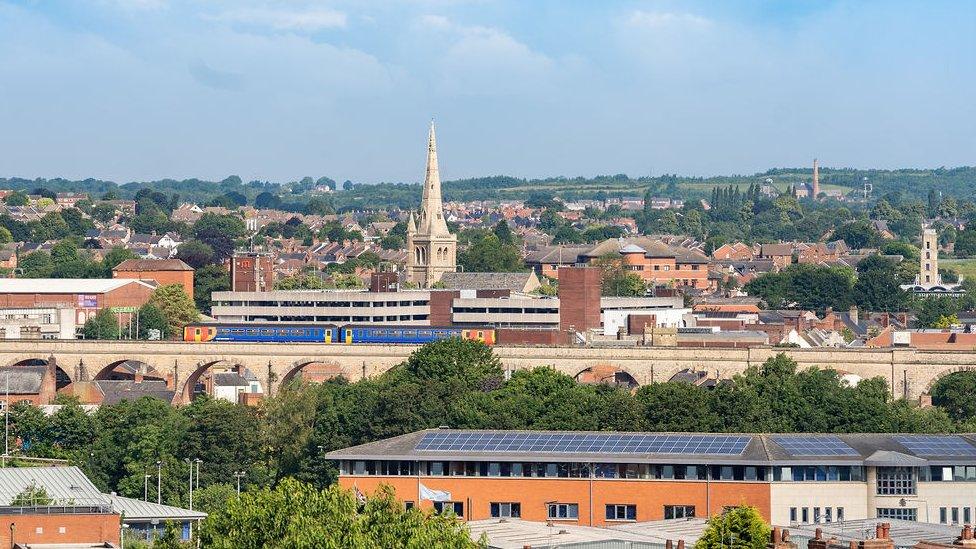
Mansfield has a far lower rate than Nottingham but will be under the same restrictions
However, Mansfield MP Ben Bradley said he was "frustrated" that his constituency, which has the lowest rate in the county at 80.5, was subject to the same restrictions as Nottingham.
He added he was seeking assurances the situation would be regularly reviewed and that if Mansfield's rates dropped, it would not have to wait for the city to come out of the "high" tier.
MPs will debate and vote on the measures on Tuesday, and the new tiered system will come into effect on Wednesday.
Jonathan Gribbin, director of public health for Nottinghamshire, backed the county having the same alert level as the city.
He said: "We need to focus on the trajectory we are on across the county, in every district, in every borough, rates are going up."
Jo Cox-Brown, an expert on the night-time economy, believes even the less severe restrictions will still pose problems for the hospitality sector.
She said: "Businesses are quite scared by the prospect of this 'half-opening'.
"It's because it means they will be trading at less capacity because people just won't be going out in larger groups with friends and co-workers."
In new figures released by Public Health England on Monday, Nottingham continued to have the highest rate of infections in England with 834.2 per 100,000 people in the week up to 9 October - double the rate of the week before, which was 425.7.
The second highest, Knowsley in Merseyside, has a rate of 656.9. England's average is 139.3.

SOCIAL DISTANCING: What are the rules now?
SUPPORT BUBBLES: What are they and who can be in yours?
FACE MASKS: When do I need to wear one?
TESTING: What tests are available?


Follow BBC East Midlands on Facebook, external, Twitter, external, or Instagram, external. Send your story ideas to eastmidsnews@bbc.co.uk.
- Published12 October 2020
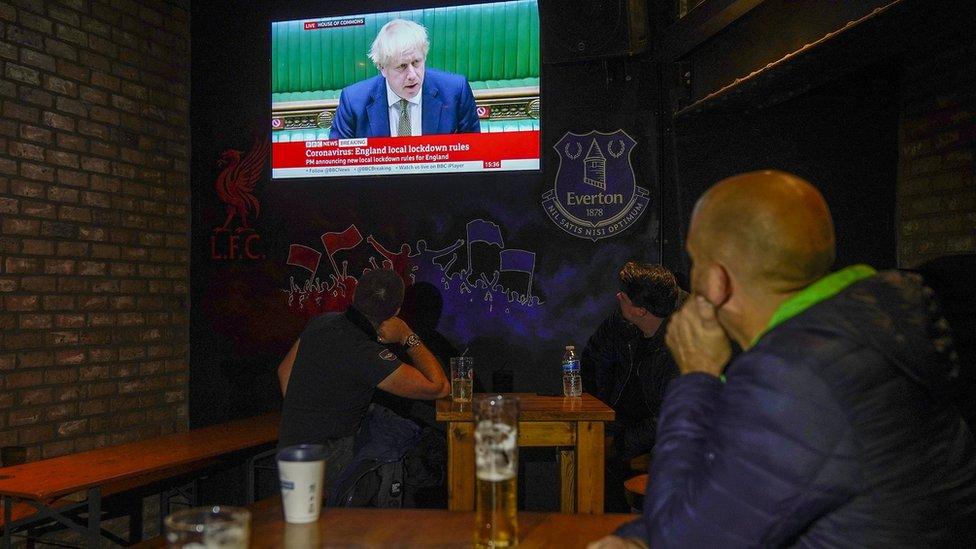
- Published10 October 2020
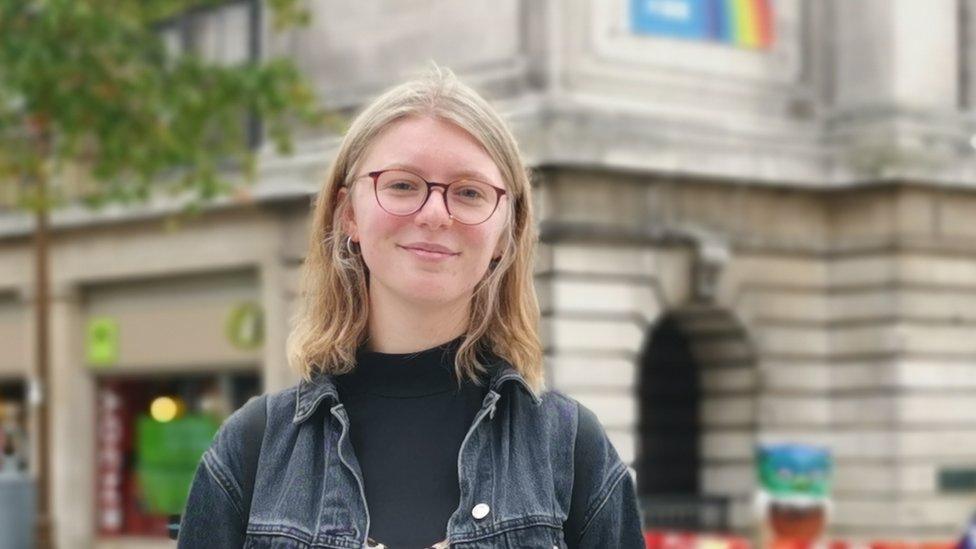
- Published9 October 2020
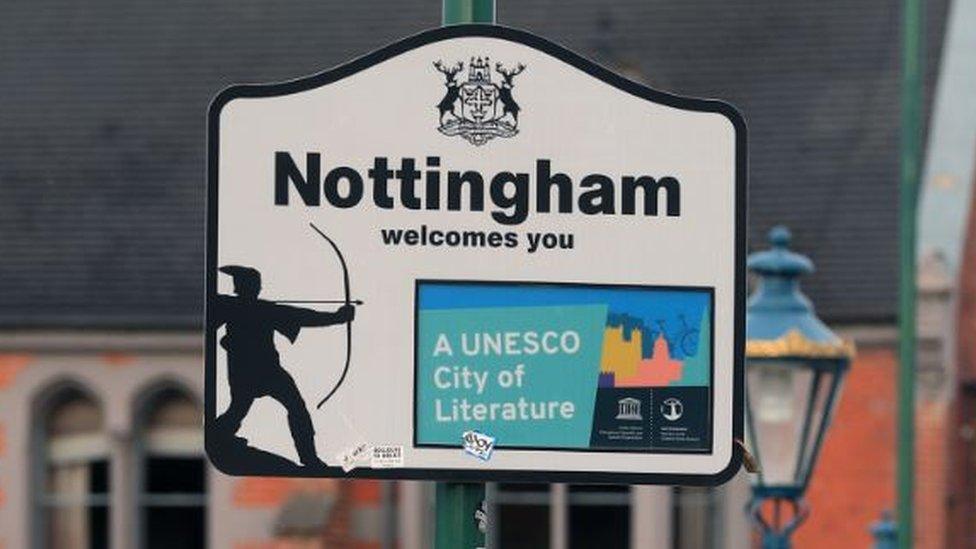
- Published5 October 2020
